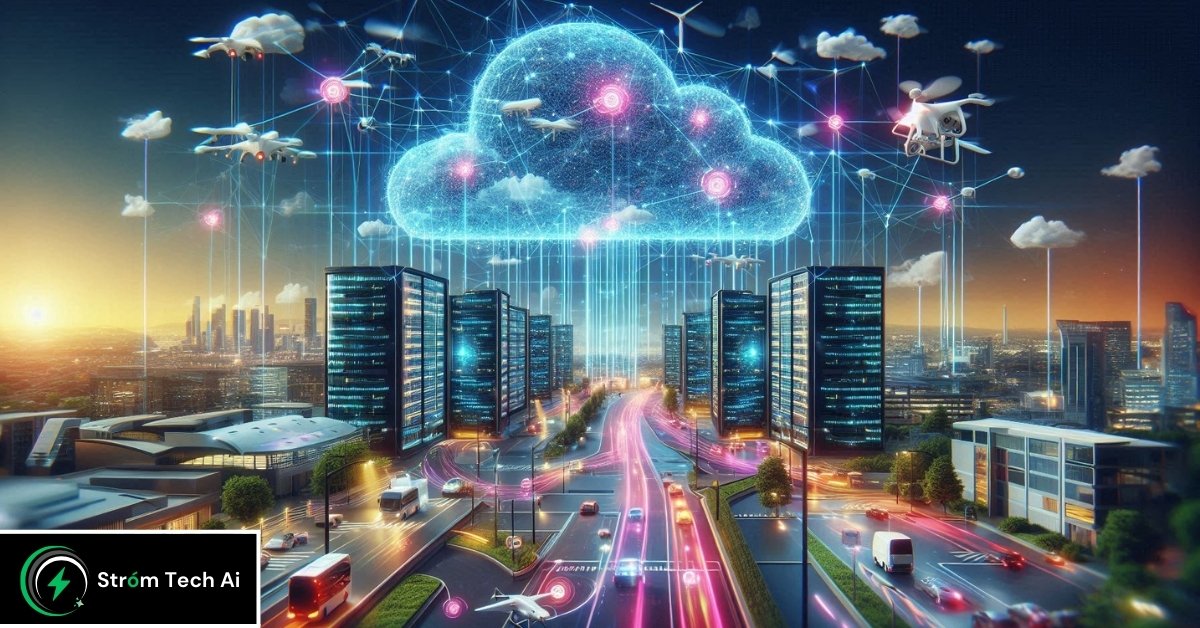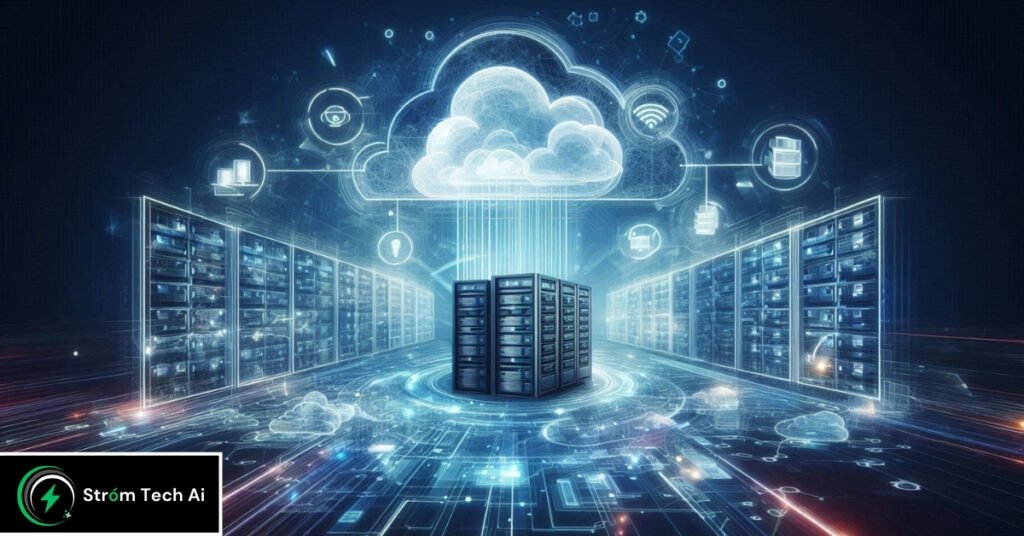What are 4 best Features of CIS Google Cloud Computing

The increasing dependence on cloud technology has made cloud environment security a primary concern. One of the major companies in the cloud space, CIS Google Cloud Computing Platform (GCP), provides many services to its clients. On the other hand, maintaining security on a platform this size might be difficult.
The Center for Internet Security (CIS) Benchmarks can help with it. These safe configuration best practices assist companies in fortifying their Google Cloud infrastructures against online attacks. In this post, we’ll go into great detail about GCP’s CIS benchmarks, how they stack up against other cloud providers, and how businesses can use them to their advantage as we can understand what is the role of cloud coumputing in edge AI.
Table of Contents
What Is CIS Google Cloud Computing?
The Center for Internet Security (CIS), a nonprofit organization devoted to enhancing international cybersecurity, developed the CIS Google Cloud Computing, a collection of principles. These benchmarks provide best practices for protecting IT systems, including cloud settings like Google Cloud. Subject matter experts (SMEs), IT specialists, and cybersecurity experts collaborate in a community-driven process to design them.
They were ensuring that enterprises follow the best security procedures and setups, which is the main goal of CIS benchmarks. They are accessible for many platforms, including databases, cloud services like GCP, and OS systems.
CIS Benchmarks for Google Cloud: Latest Versions
Version 3.0.0 of the CIS Benchmark for Google Cloud Computing is the most recent as of 2024. This version comes with some important options to strengthen Google Cloud environments’ security posture. Version 1.2.0 of the Google Container-Optimized OS is another pertinent benchmark. These benchmarks aid enterprises in efficiently securing their cloud instances and containers.
The CIS Google Cloud Computing 3.0.0’s main areas of interest are as follows:
- Access Control: This section makes sure that all non-service accounts in a company are subject to multi-factor authentication (MFA) and that corporate login credentials are used.
- Audit Logging: To track and monitor occurrences, cloud audit logging is crucial. The benchmark verifies that log entries are handled appropriately and that logging is set up effectively.
- Configuration Management: This section’s recommendations make sure that Google Cloud environments stay clear of outdated networks, unreliable protocols, and unreliable cryptographic techniques.

Key Features of CIS Benchmarks for GCP
A comprehensive set of controls for securing Google Cloud environments can be found in the CIS Benchmark for GCP. Among the crucial controls are:
1. Multi-Factor Authentication (MFA)
The main suggestion is to enable multi-factor authentication (MFA) for all non-service accounts. Beyond merely a password, multi-factor authentication adds another degree of security. This feature aids in reducing the likelihood of illegal access to vital resources in the cloud environment.
2. Cloud Audit Logging
A key component of the CIS Benchmark is correctly configuring Cloud Audit Logging. In a cloud environment, audit logs give insight into who did what and can be very helpful for incident response and compliance audits.
3. KMS Cryptokeys Management
Making sure the cryptographic keys for the Cloud Key Management Service (KMS) are changed regularly—every 90 days—is another essential piece of advice. It is imperative to maintain KMS cryptos properly to prevent unwanted access to encrypted data.
4. Storage and Secrets Management
It is never appropriate to store secrets in plain text, including API keys. Instead, it is advised to use Google Secret Manager to protect sensitive information. The standard also suggests avoiding making storage buckets publicly available.
Comparative Analysis with Other Cloud Providers
The availability of CIS Benchmarks extends beyond Google Cloud to include services like Amazon Web Services (AWS) and Microsoft Azure. Although the basic ideas are the same for all platforms, every provider has unique setups and subtleties.
1. AWS vs. Google Cloud CIS Benchmarks
The CIS Benchmark for AWS and GCP are similar in that they both enforce multi-factor authentication, maintain appropriate logs, and handle cryptographic keys. But in comparison to GCP, AWS offers certain more specialized services, such as IAM (Identity and Access Management) roles for businesses. Furthermore, another focal area where the benchmarks stress minimizing public disclosure is AWS’s storage service, S3.
2. Microsoft Azure vs. CIS Google Cloud Computing
CIS Google Cloud Computing, especially with the Google Kubernetes Engine (GKE), is more concentrated on containerized environments than Azure. Azure places a lot of focus on securing Active Directory and combining its cloud services with on-premise identity management systems.

Effective Implementation of CIS Benchmarks in GCP
Even though the CIS Benchmarks provide comprehensive guidance, manually adopting them can be difficult and time-consuming. Here’s how businesses may use Google Cloud’s native services and CIS SecureSuite® products to successfully implement the benchmarks.
1. Automated Auditing and Compliance
Making use of automated tools like CIS-CAT Pro is one of the simplest ways to deploy CIS Benchmarks. With the aid of this application, businesses may automatically evaluate their cloud environments in comparison to the CIS Benchmark and obtain compliance status reports.
A condensed version of the utility, CIS-CAT Lite, is accessible for free for anyone searching for an alternative.
2. Google Cloud Security Command Center
Google offers its suite of tools for cloud environment security and monitoring. Organizations may keep an eye out for potential threats and security misconfigurations in their Google Cloud environment by using the Security Command Center (SCC). SCC can assist in automating compliance tests and works seamlessly with CIS Benchmarks.
3. GCP Cloud Asset Inventory
Enabling cloud asset inventory enables enterprises to monitor their resources and make sure they follow the suggested security configurations, as advised by the CIS Benchmark.
Overcoming Common Challenges
There may be unique difficulties in putting CIS Benchmarks into practice, particularly in large enterprises with intricate cloud infrastructures. The following are some typical problems and solutions:
1. Misconfigurations
Misconfigurations are frequent in cloud settings since they are dynamic. Applying security configurations consistently can be ensured by using infrastructure as code tools such as Terraform or CloudFormation.
2. Lack of Awareness
The lack of knowledge or experience in putting security best practices into practice is another problem. Teams may stay up to date on the newest security procedures by providing staff training and making use of CIS SecureSuite® webinars.
3. Scaling Security
It gets harder to apply the same security measures when businesses grow their cloud systems. The secret to solving this is automation. Scaling security is made easier by utilizing Google Cloud’s policy-as-code frameworks, like Config Connector and Forseti Security.
Conclusion
Although protecting a Google Cloud environment is difficult, businesses can greatly improve their security posture by using CIS Google Cloud Computing. Organizations can make sure they adhere to legal standards and industry best practices by using the CIS Benchmarks for Google Cloud.
Furthermore, Google’s Security Command Center and technologies like CIS-CAT Pro offer crucial automation for managing compliance. Keeping a reliable and compliant cloud infrastructure is more important than ever as cyber threats keep evolving.
FAQs
What is CIS in cloud computing?
The Center for Internet Security, or CIS, is a charity that creates secure configuration guidelines and best practices to safeguard cloud environments and other IT systems. A popular set of security recommendations in cloud computing, CIS Benchmarks assist enterprises in configuring their cloud infrastructure—such as Google Cloud, AWS, or Microsoft Azure—in a way that reduces security vulnerabilities.
What are CIS Standards?
Consensus-based best practices for protecting IT systems, such as cloud environments, operating systems, databases, and more, are referred to as CIS Standards or CIS Benchmarks. These standards offer configuration suggestions to assist enterprises in guaranteeing the security of their systems. They address things like encryption, secure networking, audit logging, and user access control.
What Does CIS Mean in AWS?
When we talk about AWS, we’re talking about the CIS AWS Foundations Benchmark, which offers a collection of best practices and standards for protecting AWS settings. It covers topics including Identity and Access Management (IAM), logging, monitoring, and safeguarding network configurations to assist enterprises in configuring AWS services securely.
These benchmarks are frequently used by AWS customers to guarantee compliance and improve cloud security.
What is cloud computing at Google?
Google Cloud Platform (GCP) offers a range of cloud services that enable enterprises to create, implement, and oversee applications, store information, and leverage potent computational capabilities on Google’s network.
Computing power (VMs), storage, databases, machine learning, and networking are among the services provided by GCP. Organizations utilize it to increase application scalability, boost efficiency, and safely handle workloads.















